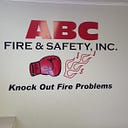Revolutionizing Fire Safety: Unraveling the Modern Marvels of Fire Sprinkler Systems
In the realm of fire safety, fire sprinkler systems stand out as stalwart guardians, offering a proactive and effective means of controlling and extinguishing fires. This in-depth exploration uncovers the evolution, intricate components, functionalities, and crucial role of modern fire sprinkler systems in safeguarding lives and property.
Evolution of Fire Sprinkler Systems
A. Historical Journey: Fire sprinkler systems trace their roots to the 19th century, evolving from rudimentary designs to sophisticated systems we rely on today. Henry S. Parmelee’s 1874 patent marked a revolutionary approach to fire safety.
B. Overcoming Challenges: Early sprinkler systems faced skepticism but gained acceptance through technological advancements. Modernization brought forth cutting-edge technologies, smart sensors, and real-time monitoring.
Key Components of Modern Fire Sprinkler Systems
A. Sprinkler Heads: Frontline soldiers strategically placed throughout a building, sprinkler heads activate individually in response to heat, releasing water to control or extinguish fires.
B. Pipes and Water Supply: A network of pipes connects sprinkler heads to a reliable water supply, acting as conduits for pressurized water, ensuring rapid and uniform distribution upon activation.
C. Control Valve: Functioning as the brain, the control valve regulates water flow and pressure. It remains closed until a fire triggers the system, opening to release water.
D. Alarm Bell or Monitoring System: Integrated alarm bells or sophisticated monitoring systems provide immediate alerts to occupants and emergency services, enhancing overall response effectiveness.
How Fire Sprinkler Systems Function
A. Heat-Activated Response: Modern systems respond to heat, activated by elevated temperatures caused by a fire. Each sprinkler head operates independently for a targeted response.
B. Rapid Water Distribution: Upon activation, pressurized water is swiftly released, creating a curtain-like effect to control or extinguish the fire, preventing further spread.
C. Dispelling Myths: Contrary to misconceptions, systems respond to individual fires, not all activating simultaneously. This targeted approach minimizes water damage, ensuring system efficiency.
Advantages and Applications of Fire Sprinkler Systems
A. Life and Property Protection: Providing unparalleled protection, systems’ rapid response reduces the risk of injury and limits fire damage.
B. Versatility Across Environments: Adaptable to various settings — residential, commercial, industrial — fire sprinkler systems are crucial components of diverse safety infrastructures.
C. Cost-Effectiveness: While installation costs may be a consideration, long-term benefits include minimized fire-related damages, reduced insurance premiums, and ensured business continuity.
Challenges and Considerations in Fire Sprinkler System Implementation
A. Regulatory Compliance: Adherence to local fire safety regulations is paramount, ensuring the system meets required safety benchmarks.
B. Regular Maintenance: Critical for continued functionality, routine inspections and maintenance prevent compromise during emergencies.
C. Public Perception and Awareness: Despite proven efficacy, a lack of public awareness persists. Increasing education and dispelling myths contribute to broader acceptance.
The Future of Fire Sprinkler Systems
A. Integration with Smart Technologies: An emerging trend, integration with smart technologies introduces features like remote monitoring, predictive analytics, and real-time data access, enhancing overall system efficiency.
B. Advances in Sensor Technologies: Ongoing developments aim to improve fire detection accuracy, reducing false alarms and optimizing system response.
C. Sustainability and Water Conservation: Future innovations may focus on sustainability, exploring ways to maintain effectiveness while minimizing water usage.
Conclusion: A Lifeline in Fire Safety
In conclusion, modern fire sprinkler system are a testament to human ingenuity in enhancing safety and mitigating the devastating impact of fires. From historical roots to today’s sophisticated systems, fire sprinklers evolve, remaining at the forefront of fire safety measures. Understanding their components, functionalities, and ongoing advancements empowers individuals and organizations to make informed decisions, saving lives and protecting property. Looking to the future, innovative technologies promise to make fire sprinkler systems even more efficient and integral to safeguarding communities.
